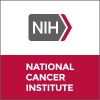
CD19 Redirected Autologous T Cells for Hodgkin Lymphoma
Hodgkin Lymphoma With no Available Curative Treatment Options Who Have a Limited PrognosisPilot open-label study to estimate the feasibility, safety and efficacy of intravenously administered, RNA electroporated autologous T cells expressing CD19 chimeric antigen receptors expressing tandem TCR and 4-1BB (TCR /4-1BB) costimulatory domains (referred to as RNA CART19) in Hodgkin Lymphoma (HL) patients.

Vaccine Therapy in Treating Patients Who Have Received First-Line Therapy for Hodgkin's Lymphoma...
LymphomaRATIONALE: Vaccines made from a tumor antigen may help the body build an effective immune response to kill tumor cells. PURPOSE: This phase I/II trial is studying the side effects and how well vaccine therapy works in treating patients who have received first-line therapy for Hodgkin's lymphoma.

Pentostatin and Alemtuzumab as a Preparative Regimen for Allogeneic Peripheral Blood Stem Cell Transplantation...
LeukemiaLymphoma5 moreThis study tests the hypothesis that a purely immunosuppressive preparative regimen allows engraftment of related or unrelated allogeneic hematopoietic stem cells in subjects with high-risk malignancies, without causing the post-transplant myelosuppression (e.g., neutropenia, thrombocytopenia) that occurs with currently used reduced-intensity (nonmyeloablative) preparative regimens. This study incorporates both safety and efficacy endpoints and evaluates a novel preparative regimen of alemtuzumab plus continuous-infusion pentostatin, two immunosuppressive agents with different mechanisms of action, in recipients of related or unrelated allogeneic hematopoietic stem cell transplantation.

A Phase I Dose Escalation Study of SGN-35 Alone and in Combination With Gemcitabine for CD30-Positive...
DiseaseHodgkin5 moreThis study will examine the safety profile of SGN-35 alone and in combination with gemcitabine. The study will test increasing doses of SGN-35 given weekly to small groups of patients.

In-Vivo Activated T-Cell Depletion to Prevent GVHD
Acute Myelogenous LeukemiaAcute Lymphocytic Leukemia9 moreThe purpose of this study is to compare the effects (good and bad) of the medication basiliximab in combination with cyclosporine with cyclosporine alone for the prevention of graft-versus-host disease. This research is being done because there is no completely safe and effective prevention for graft-versus-host disease. It is known that cyclosporine helps with GVHD but we would like to know if the addition of basiliximab will decrease the incidence and/or severity of GVHD after a transplant known as nonmyeloablative ("mini" transplant).

MDX-010 in Treating Patients With Recurrent or Refractory Lymphoma
Adult Grade III Lymphomatoid GranulomatosisB-cell Chronic Lymphocytic Leukemia21 moreBiological therapies, such as MDX-010, work in different ways to stimulate the immune system and stop cancer cells from growing. This phase I/II trial is studying the side effects and best dose of MDX-010 and to see how well it works in treating patients with recurrent or refractory B-cell non-Hodgkin's lymphoma.

Reduced-Intensity Regimen Before Allogeneic Transplant for Patients With Relapsed Non-Hodgkin's...
LymphomaRATIONALE: Photopheresis allows patient white blood cells to be treated with ultraviolet (UV) light and drugs outside the body to inactivate T cells. Pentostatin may suppress the immune system and reduce the chance of developing graft-versus-host disease (GVHD) following bone marrow transplantation. Combining photopheresis with pentostatin and total-body irradiation may be effective in killing cancer cells before bone marrow transplantation. PURPOSE: This phase II trial is studying how well giving photophoresis together with pentostatin and total-body irradiation as a reduced-intensity regimen before allogeneic bone marrow transplantation works in treating patients with relapsed non-Hodgkin's or Hodgkin's lymphoma.

Oblimersen and Gemcitabine in Treating Patients With Advanced Solid Tumor or Lymphoma
Extranodal Marginal Zone B-cell Lymphoma of Mucosa-associated Lymphoid TissueNodal Marginal Zone B-cell Lymphoma33 moreDrugs used in chemotherapy such as gemcitabine use different ways to stop cancer cells from dividing so they stop growing or die. Oblimersen may increase the effectiveness of gemcitabine by making cancer cells more sensitive to the drug. This phase I trial is studying the side effects and best dose of oblimersen and gemcitabine in treating patients with metastatic or unresectable solid tumors or lymphoma

Avelumab In Patients With Previously Treated Advanced Stage Classical Hodgkin's Lymphoma (JAVELIN...
Hodgkins LymphomaThis is a Phase 1b, open-label, multi-center study comprising a lead-in phase and an expansion phase. The lead-in phase is a multiple-dose, randomized, parallel-arm, pharmacokinetic and pharmacodynamic study of avelumab as a single agent in adult patients with cHL. Patients enrolled in the lead-in phase of this study are required to have relapsed following a prior autologous or allogeneic HSCT, or to be ineligible for HSCT. Based on the preliminary TO, safety, and efficacy results from the lead-in phase, the expansion phase will evaluate the anti-tumor activity and safety of single-agent avelumab utilizing an intra-patient dose escalation paradigm based on two of the dosing regimens studied in the lead-in phase in 40 cHL patients in whom an allogeneic HSCT has failed.

Lymphoma RadVax LYMPHOMA: A PHASE II TRIAL OF NIVOLUMAB + LOW DOSE RADIOTHERAPY FOR INCOMPLETE RESPONDERS...
Hodgkin LymphomaThis is a Phase II single-arm, single-site, open label clinical trial with r/r HL patients, aimed to determine whether a RadVax approach using low-dose RT added to nivolumab can improve response among patients who do not achieve a CR to nivolumab alone. The long-term goal is to develop an effective regimen for r/r HL patients.
